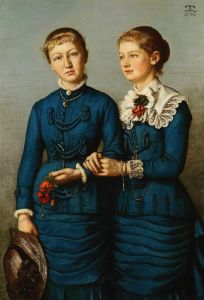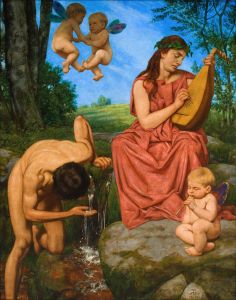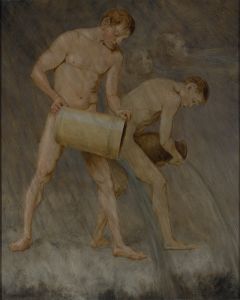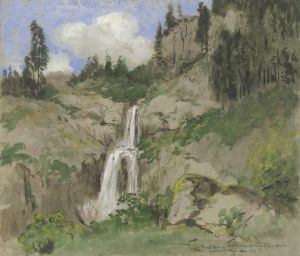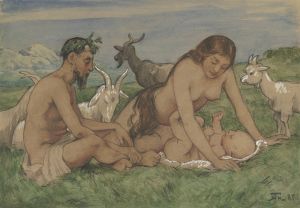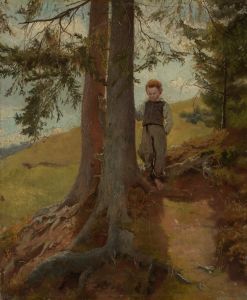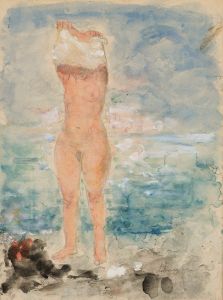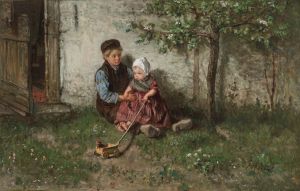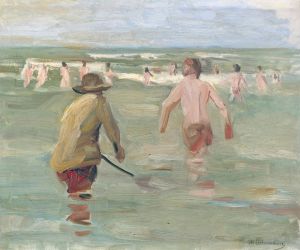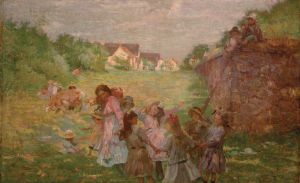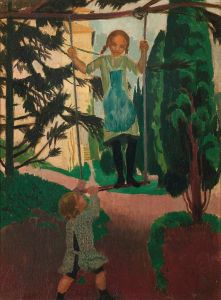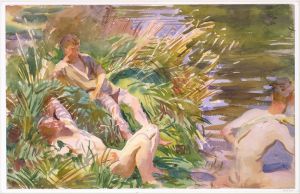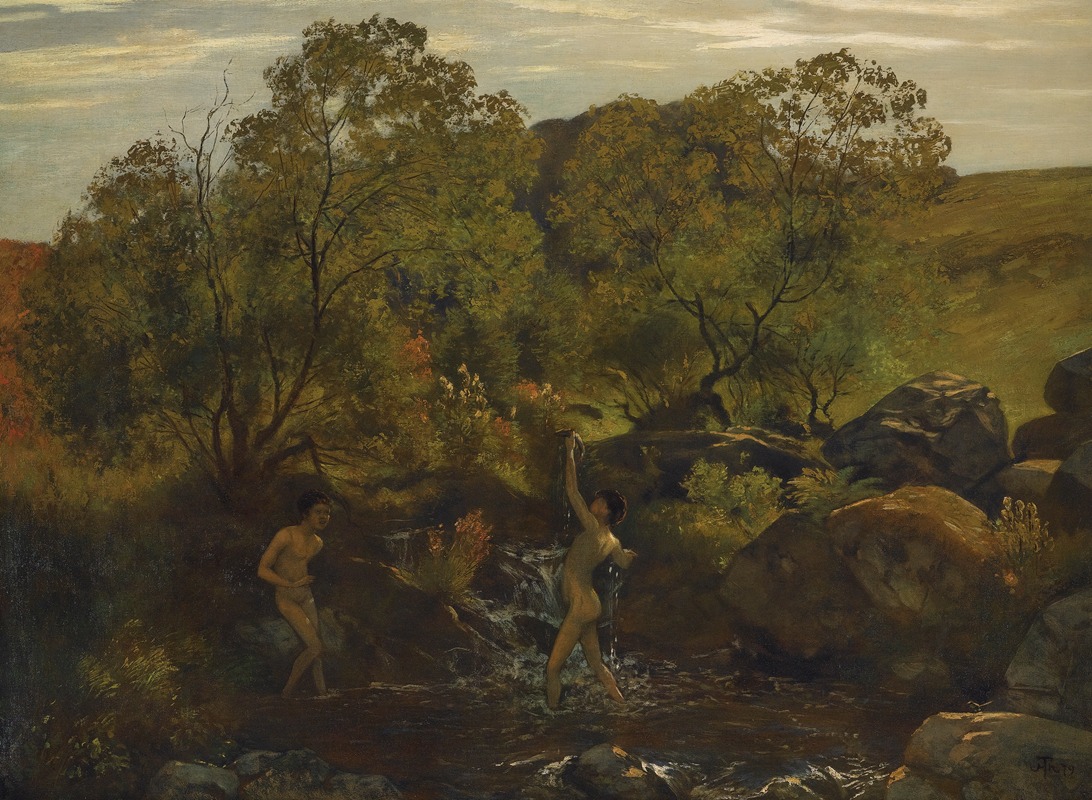
Badende Jünglinge
A hand-painted replica of Hans Thoma’s masterpiece Badende Jünglinge, meticulously crafted by professional artists to capture the true essence of the original. Each piece is created with museum-quality canvas and rare mineral pigments, carefully painted by experienced artists with delicate brushstrokes and rich, layered colors to perfectly recreate the texture of the original artwork. Unlike machine-printed reproductions, this hand-painted version brings the painting to life, infused with the artist’s emotions and skill in every stroke. Whether for personal collection or home decoration, it instantly elevates the artistic atmosphere of any space.
Hans Thoma's painting Badende Jünglinge (translated as Bathing Youths) is a work by the German painter Hans Thoma (1839–1924), who is considered one of the prominent figures of 19th-century German art. Thoma was known for his landscapes, portraits, and genre scenes, often inspired by the natural beauty of his native Black Forest region and the Romantic and Symbolist movements of his time.
Badende Jünglinge depicts a group of young men bathing in a natural setting, a theme that reflects Thoma's interest in the harmony between humanity and nature. The painting showcases his characteristic style, which combines realism with a subtle idealization of the human figure. The composition emphasizes the idyllic and serene atmosphere of the scene, with the figures integrated harmoniously into the surrounding landscape. Thoma's use of light and color captures the warmth and tranquility of the moment, highlighting his skill in rendering both the human form and the natural environment.
The painting is often noted for its connection to the broader cultural and artistic trends of the late 19th century. During this period, there was a renewed interest in classical themes and the human body, influenced by the revival of Renaissance ideals and the growing appreciation for ancient Greek and Roman art. Thoma's work reflects these influences while also maintaining a distinctly German sensibility, rooted in the Romantic tradition and a deep connection to the natural world.
Hans Thoma's art was well-regarded during his lifetime, and he achieved significant recognition in Germany. He served as the director of the Karlsruhe Academy and was celebrated for his contributions to German art. However, his work fell out of favor in the early 20th century as modernist movements gained prominence. In recent years, there has been a renewed interest in Thoma's paintings, including Badende Jünglinge, as art historians and audiences have sought to re-evaluate his contributions to 19th-century art.
The exact date of creation for Badende Jünglinge is not widely documented, and specific details about its current location or provenance are not readily available in public records. However, the painting remains an example of Thoma's ability to blend naturalism with a poetic vision, capturing the timeless beauty of youth and nature.





